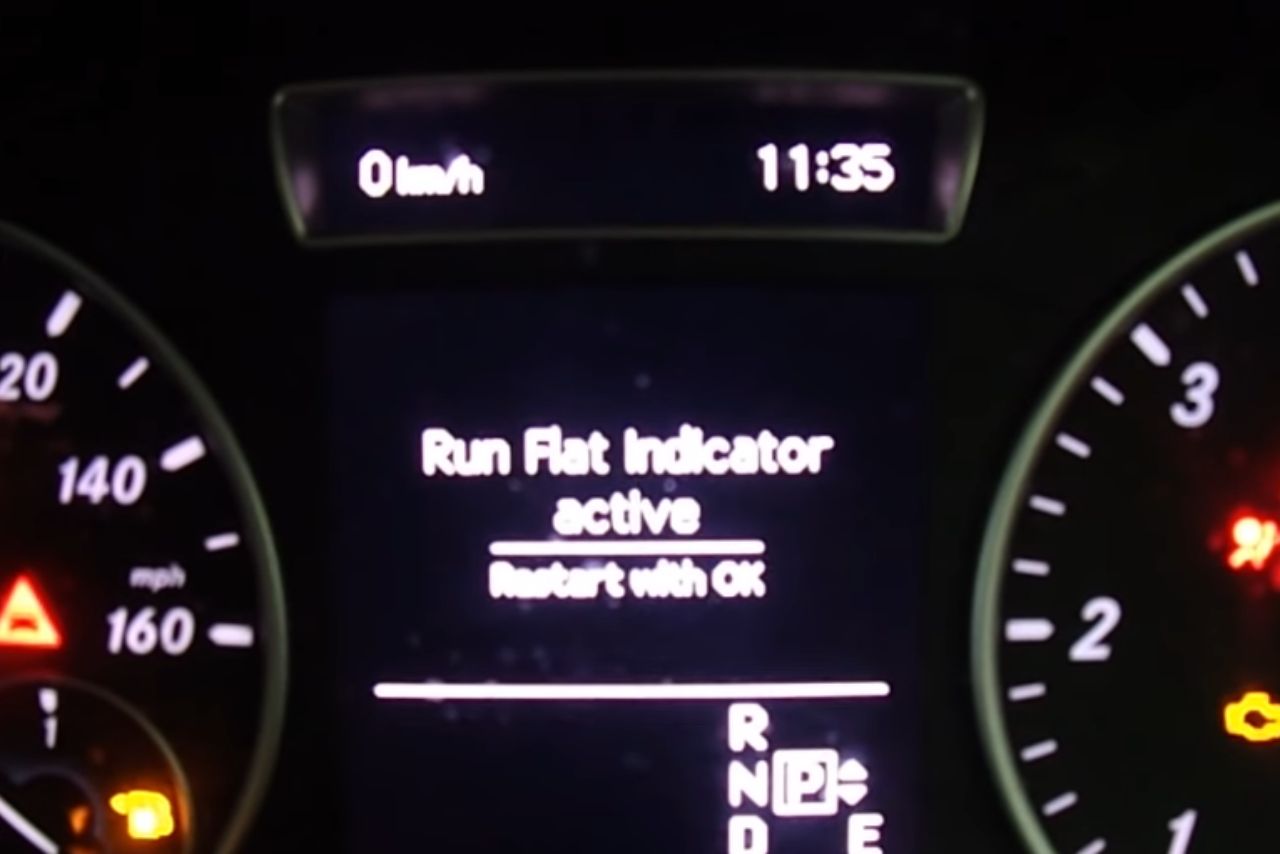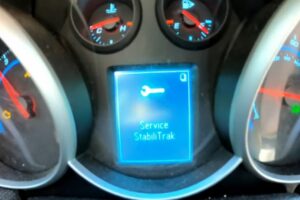Have you ever been cruising down the road, only to have your peace shattered by an unresponsive run flat indicator? You’re not alone.
A common yet often overlooked issue, run flat indicator inoperative problems can be a real pain for drivers all over the globe.
Whether it’s due to wiring issues or faulty sensors, these glitches may leave you guessing whether your tires are holding up under pressure.
Run Flat Indicator Inoperative Problem & 100% Solution:
SUCCESS
Solution: Open the bonnet, locate the fuse box, and find a GREEN fuse. Remove, clean, and reinsert it. This simple fix resolves the issue for many users experiencing the “Run flat indicator inoperative” error.
Here In the below image You Can see the proof 👇, one of our reader who fixed his Run Flat Indicator Inoperative Problem by using our method this issue was due dirty GREEN fuse so, he performed the fuse cleaning and the issue got fixed! 😍

Table of Contents
What is a Run Flat Indicator?
A Run Flat Indicator (RFI) is an important component in your vehicle. It’s designed to notify you when the pressure in any of your tires drops below safe levels, indicating a possible puncture or impending flat tire.
Key features include:
Here are some specifics about how it works:
- Sensors: Embedded within each wheel, these detect changes in tire pressure.
- Control Unit: This receives data from sensors and calculates whether the pressure level remains within acceptable parameters.
- Warning Light: If any anomalies get detected, this light on your dashboard illuminates as a warning signal.
| Component | Function |
|---|---|
| Sensors | Detect changes in tire pressure |
| Control Unit | Receives data and determines if action needed |
| Warning Light | Illuminates to alert driver of potential issue |
What makes RFI crucial?
- Enhances Safety: Helps avoid accidents caused by sudden blowouts or unstable handling due to low tire pressures.
- Extends Tire Lifespan: By maintaining optimal air pressure levels, it prolongs the service life of your tires.
Remember, although RFIs provide valuable alerts regarding potential issues with your tires, they’re not foolproof and should not replace regular manual checks for proper inflation and wear patterns on all four wheels.
Common Causes of Run Flat Indicator Inoperative:

There are several reasons why your run flat indicator might not be working properly. Here are some common causes:
1. Faulty wheel speed sensors:
These sensors detect the rotational speed of each wheel and are crucial for the proper functioning of the run flat indicator. If one or more sensors fail, it can result in the indicator malfunctioning.
2. Damaged or cracked reluctor (tone) rings:
The reluctor ring, also known as the tone ring, is typically located on the wheel hub and works in conjunction with the wheel speed sensor.
Damage to this ring, such as cracks or breaks, can lead to inaccurate readings and trigger the indicator.
3. Issues with ABS/traction control system:
Since the run flat indicator is often integrated with the ABS (anti-lock braking system) and traction control systems, any malfunction or fault in these systems can affect the indicator’s operation.
4. Throttle position sensor malfunction:
The throttle position sensor monitors the positionof the throttle pedal and sends signals to the engine control unit.
A malfunctioning sensor can cause erratic behavior in the vehicle, including triggering warning lights like the run flat indicator.
5. Electrical relay failure:
The run flat indicator system may rely on electrical relays to function properly. If one of these relays fails or malfunctions, it can disrupt the power supply to the indicator system and result in its inoperative status.
6. Sensor misalignment or calibration error:
Over time, sensors can become misaligned or experience calibration issues, especially after maintenance or repairs.
This misalignment or calibration error can lead to incorrect readings and the subsequent inoperative status of the run flat indicator.
Symptoms of an Inoperative Run Flat Indicator:

Knowing the symptoms of a faulty Run Flat Indicator is crucial to avoid potential tire damage or accidents. Here are some signs that you should be aware of:
| Symptoms | Possible Causes |
|---|---|
| No Warning Light | Faulty sensor or electrical issues |
| Constant Warning Light | Defective control unit or wiring problems |
| Inaccurate Warnings | Damaged sensors |
It’s essential to address these issues promptly. Ignoring them can lead to severe consequences like premature tire wear and poor fuel economy.
Moreover, driving with underinflated run-flat tires can heat them excessively causing blowouts at high speeds.
Effects of an Inoperative Run Flat Indicator:
When the run flat indicator in your vehicle fails, it can lead to a variety of issues. Here are some potential problems:
Here’s how these effects translate into real-world consequences:
| Effect | Consequence |
|---|---|
| Increased risk of tire damage | More frequent replacements and repair costs |
| Potential safety hazards | Higher likelihood of traffic accidents |
You might also experience:
In conclusion: A faulty run flat indicator is not just inconvenient – it can impact both your wallet and safety on the road!
How to Diagnose an Inoperative Run Flat Indicator?
Run flat indicators can sometimes fail. Here’s a simple guide on how you can diagnose the problem:
| Steps | Actions |
|---|---|
| 5 | Check Warning Lights |
| 6 | Consult Professional Help |
Note: If you’ve followed these steps and are still having issues, it might be time to consult professional help from a qualified mechanic or electrician specializing in vehicle electronics systems.
Possible Solutions for Inoperative Run Flat Indicators:

When faced with a non-operational run flat indicator, consider these troubleshooting steps:
Remember, regular maintenance is key! Always check tire pressure regularly and keep up with scheduled servicing of your car’s systems.
Watch this video to fix this issue ASAP:
Tips for Preventing Run Flat Indicator Problems:
Preventing problems with your run flat indicator can save you both time and money. Follow these simple tips to help keep your system running smoothly:
If you need more information about each point above, use this table as a quick guide:
| Tip | Details |
|---|---|
| Check Tires | All should have correct air pressure according to the manufacturer’s specifications. |
| Service Car | Regular servicing ensures all electronics work correctly. Have an expert check if unsure about doing it yourself. |
| Replace Sensors | Old or damaged sensors might give false readings on the dashboard display. Always replace when necessary |
By adhering to these guidelines, preventing run-flat indicator issues becomes easier than ever!
Frequently Asked Questions about Inoperative Run Flat Indicators
What is a run flat indicator?
A run flat indicator is a safety feature in many modern vehicles that alerts the driver when tire pressure drops below a certain point.
How do I fix an inoperative run flat indicator?
The solution will depend on the cause of the problem:
Replace faulty sensors.
If dead batteries are suspected, recharge or replace them.
For software issues, ensure your vehicle’s system is up-to-date.
4. Can I drive with a malfunctioning run flat indicator?
Yes, but it’s not recommended because you won’t know if your tires are losing pressure which can lead to hazardous driving conditions and potentially serious accidents.
Why isn’t my run flat indicator working?
This could be due to several reasons such as:
Faulty sensor
Dead battery
Software glitches
| Potential Problem | Solution |
|---|---|
| Faulty Sensor | Replace with new one |
| Dead Battery | Recharge or replace |
| Software Glitch | Update software |
Conclusion and final thoughts
Run flat indicator problems can be quite inconvenient, especially when you’re on a trip and need to ensure your tires are in top shape.
However, don’t let these issues stress you out. With regular maintenance, early detection of potential failures, and immediate action upon noticing any irregularities with the system, these difficulties can often be managed or even avoided altogether.
Remember that it’s crucial to consult with professionals if needed. Their expert advice could save you from unnecessary costs or dangerous situations on the road.
So next time your run-flat indicator seems inoperative, keep calm and act wisely – safety should always come first!
Latest Posts:
- Can WD-40 Remove Scratches on Cars? (Hint: Yes, but…)
- Can You Use a Drill to Polish Your Car? (We Tried it Out!)
- Should You Cover Car Scratches With Stickers? (REVEALED!)
- Buick Service Stabilitrak: (Causes & 100% Guaranteed Fix!)
- Common Holden Trax Problems (Causes & 100% Proven Fixes!)
- Jeep Commander Transmission Over Temp: (Guaranteed Fix!)












Leave a Reply